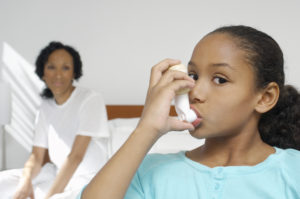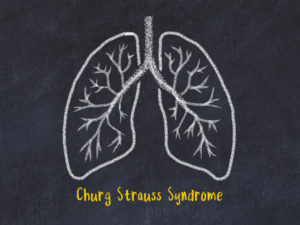Sinusitis
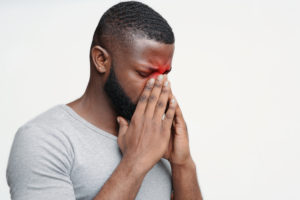
Sinusitis is a term for an inflammation of the sinus. Most of the time however, it refers to a typical sinus infection. There are of course various causes of sinus infections ranging from infections due to a virus, bacteria, fungus, or parasite. Viral sinus infections are by far the most common sinusitis seen in the community. Bacterial sinus infections are certainly not uncommon and often result from a secondary bacterial infection in someone who had had a viral sinus infection. Fungal and parasitic sinus infections are quite unusual and are more likely to occur in immunocompromised individuals. Sinusitis occurs when fluid enters the sinus cavity which is normally filled with air.
There are 4 major types of sinusitis:
- Acute sinusitis: Generally, lasts 4 weeks or less. It typically presents suddenly. It is most often caused by viruses, (e.g., common cold virus), although bacteria and rarely fungi may be responsible for this type of sinusitis. Having a history of allergic rhinitis (i.e., hay fever) is a risk factor
- Subacute sinusitis: Generally, lasts between 4 to 12 weeks in duration. It commonly occurs in conjunction with bacterial infections or partially treated infections. Having a history of allergic rhinitis is a risk factor.
- Chronic sinusitis: Generally, lasts more than 12 weeks in duration. It commonly occurs in conjunction with bacterial or rarely fungal sinus infections. Partially treated acute or subacute sinus infections may turn into a chronic sinus infection. Having a history of allergic rhinitis is a risk factor.
- Recurrent sinusitis: This occurs when a sinus infection occurs 4 or more times in one year.
Each pair of sinuses are named for the bone that they are situated on. The names of the 4 sinuses are maxillary sinuses, ethmoid sinuses, frontal sinuses, and sphenoid sinuses. The maxillary sinuses are located on the cheekbones. The ethmoid sinuses are situated on each side of the upper nose between the eyes. The frontal sinuses are positioned in the forehead region above the eyes. The sphenoid sinuses are located behind the eyes and bridge of the nose.
The classic symptoms of sinusitis may include nasal congestion, sinus pressure, post-nasal drip, sinus pain, facial pain, discolored mucus, headaches, sore throat, malodorous breath, and/or exacerbation of asthma. It should be noted that in patients with chronic sinusitis, just an aggravation of one’s asthma may be the only sign of underlying sinusitis. A decrease in one’s sense of taste and smell, earaches, and/or fatigue may also occur in individuals with chronic sinusitis.
There are numerous risk factors that make someone more prone to acquiring sinusitis. These risk factors are as follows:
- Allergic rhinitis (i.e., hay fever)
- Previous upper respiratory infection (URI), usually viral in origin
- Structural irregularities of the nose/sinuses
- Nasal polys
- Smoking/smoke exposure
- Immunodeficiency (i.e., weakened immune system)
Diagnosis:
The diagnosis of sinusitis can be made by just doing a comprehensive history and physical examination for the most part. In some instances, a CT scan of the sinuses may be necessary, particularly when trying to diagnose chronic or recurrent sinusitis. Rhinoscopy, (i.e., looking into the nasal passages and sinuses through a thin flexible tube with a fiber-optic light) is sometimes used to visualize the anatomy of the problem. In rare instances, a culture may be taken to rule out a fungus as a causative agent of the sinusitis or to ascertain which antibiotic is necessary to treat a resistant bacterial sinus infection.
Treatment:
Most viral sinusitis cases resolve on their own without treatment. Decongestants and nasal corticosteroids are useful in many cases to provide clinical relief in patients with sinusitis. Rest and fluids are also advised in most situations of sinusitis. Symptomatic relief can sometimes be enhanced by using saline irrigation in the form of a nasal spray or Neti pot. Likewise, breathing in steam from a hot shower is helpful in some individuals. Pain relief can be aided by using Tylenol (i.e., acetaminophen) or nonsteroidal anti-inflammatory drugs (NSAIDs) such as ibuprofen or naproxen. Antibiotic therapy may be necessary for some individuals. When implemented. For individuals who are not allergic to penicillin, amoxicillin or Augmentin (i.e., amoxicillin + clavulanic acid) is the antibiotic of choice for most areas of the U.S. The course of an antibiotic is usually 10-14 days for the treatment of acute sinusitis and 3-4 weeks for chronic sinusitis.
It is important to note that many individuals who have sinusitis have underlying allergies. Many people are aware of these allergies, but many are not aware. Individuals who get sinusitis should seek a consultation with a board certified allergist like the ones at Black & Kletz Allergy. By addressing the underlying allergies and controlling them, one is subsequently less likely to continue to experience bouts of sinusitis.
The board certified allergists of Black & Kletz Allergy have had over 50 years of experience dealing with sinusitis, sinus infections, and other sinus-related conditions. Black & Kletz Allergy has 3 office locations in the greater Washington, DC, Northern Virginia, and Maryland metropolitan area. The allergy specialists at Black & Kletz Allergy diagnose and treat both adults and children with sinus disease, allergies (e.g., hay fever, food allergies, medication allergies), asthma, hives, swelling episodes, insect bites, bee sting allergies, eczema, contact dermatitis, and immunologic problems. We have offices in Washington, DC, McLean, VA (Tysons Corner, VA), and Manassas, VA and have on-site parking at each location. The Washington, DC and McLean, VA offices are Metro accessible and there is a free shuttle that runs between our McLean, VA office and the Spring Hill metro station on the silver line. Please call us to schedule an appointment or alternatively, you can click Request an Appointment and we will respond within 24 hours by the next business day. Black & Kletz Allergy has been striving to provide high quality allergy and asthma care to the residents of the Washington, DC metro area for more than a half a century and we are dedicated to continue delivering state-of-the-art allergy and asthma care in the future.

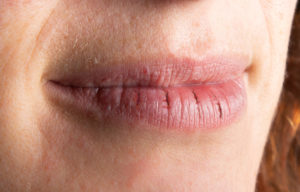 An inflammatory appearance of the lips is termed cheilitis. This inflammation of the lips may cause redness, dryness, and/or scaling on the lips. It can also be associated with swelling, and in severe cases, blisters and/or sores may develop on the lips. Cheilitis can be either acute or chronic in nature. Although most cases of cheilitis are due to sun exposure, allergies involving the lips are quite common. Allergic cheilitis is sometimes referred to as eczematous cheilitis which is also called lip dermatitis.
An inflammatory appearance of the lips is termed cheilitis. This inflammation of the lips may cause redness, dryness, and/or scaling on the lips. It can also be associated with swelling, and in severe cases, blisters and/or sores may develop on the lips. Cheilitis can be either acute or chronic in nature. Although most cases of cheilitis are due to sun exposure, allergies involving the lips are quite common. Allergic cheilitis is sometimes referred to as eczematous cheilitis which is also called lip dermatitis.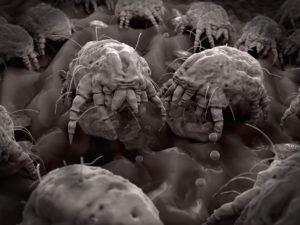 When one thinks of house dust, a picture may come to mind of a room with a whitish colored film of dirt covering the hardwood floors, wooden furniture, and any other visible hard surface in the room. One may also envision house dust scattered in the air which can often be seen with the aid of the light from a window in the room. Does this “dust” that you are envisioning however cause allergies in a typical dust-allergic individual? The answer is not usually. More commonly, the “dust” that typically causes dust allergies is the “dust” that is embedded into carpeting, upholstered furniture, pillows, mattresses, box springs, and blankets. The reason that free-floating dust is less likely to cause allergies is because dust mites, the main dust allergen, tend not to live in the air or on hard surfaces. Dust mites tend to live in bedding (i.e., pillows, mattresses, box springs, blankets), carpeting, and upholstered surfaces. Approximately 33% of dust mite life takes place in bedding. There are from tens of thousands to millions of dust mites that typically live in the average bed. In addition, approximately 100,000 dust mites can live in 1 square yard of carpeting. Dust mites tend to prefer warm and moist environments as opposed to cool and dry conditions.
When one thinks of house dust, a picture may come to mind of a room with a whitish colored film of dirt covering the hardwood floors, wooden furniture, and any other visible hard surface in the room. One may also envision house dust scattered in the air which can often be seen with the aid of the light from a window in the room. Does this “dust” that you are envisioning however cause allergies in a typical dust-allergic individual? The answer is not usually. More commonly, the “dust” that typically causes dust allergies is the “dust” that is embedded into carpeting, upholstered furniture, pillows, mattresses, box springs, and blankets. The reason that free-floating dust is less likely to cause allergies is because dust mites, the main dust allergen, tend not to live in the air or on hard surfaces. Dust mites tend to live in bedding (i.e., pillows, mattresses, box springs, blankets), carpeting, and upholstered surfaces. Approximately 33% of dust mite life takes place in bedding. There are from tens of thousands to millions of dust mites that typically live in the average bed. In addition, approximately 100,000 dust mites can live in 1 square yard of carpeting. Dust mites tend to prefer warm and moist environments as opposed to cool and dry conditions.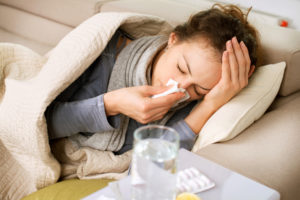

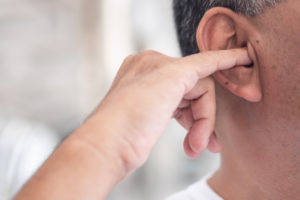 The Eustachian tube is a small tubular passageway that connects the middle ear with the junction of the back of the nose and upper throat. It is approximately 1.5 inches long and 3 mm. (0.12 inches) in diameter. It is the structure in the ear that pops when one goes to high altitudes or descends deep in the water. The tube helps to regulate pressure in the middle ear, shield the ear from hearing its own body noises, and drain fluid from the middle ear. The Eustachian tube has a valve that opens and closes. If the tube stays open too much, one may get a constant feeling of increased pressure in one’s ear. In addition, one may hear their own body noises such as hearing one’s voice too loudly or hearing one’s own breathing. On the other hand, if the Eustachian tube stays closed, there may be a buildup of fluid which may result in a feeling of increased pressure and/or pain in the ear as well as a decrease in hearing.
The Eustachian tube is a small tubular passageway that connects the middle ear with the junction of the back of the nose and upper throat. It is approximately 1.5 inches long and 3 mm. (0.12 inches) in diameter. It is the structure in the ear that pops when one goes to high altitudes or descends deep in the water. The tube helps to regulate pressure in the middle ear, shield the ear from hearing its own body noises, and drain fluid from the middle ear. The Eustachian tube has a valve that opens and closes. If the tube stays open too much, one may get a constant feeling of increased pressure in one’s ear. In addition, one may hear their own body noises such as hearing one’s voice too loudly or hearing one’s own breathing. On the other hand, if the Eustachian tube stays closed, there may be a buildup of fluid which may result in a feeling of increased pressure and/or pain in the ear as well as a decrease in hearing.